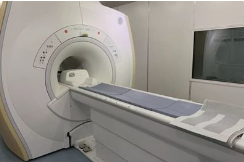Rufen Sie uns 24/7 an
+86 130 5991 3207Senden Sie uns Post
info@msfoam.com
ESD PE-Schaum
ESD-PE-Schaum ist eine Art antistatischer, geschlossenzelliger Polyethylenschaum in schwarzer Farbe. Es handelt sich um einen umweltfreundlichen, elektrostatisch schützenden Industrieschaum mit geringer Dichte für die Verpackungsindustrie. Als Schaum Oberfläche Widerstand Unterschied, hat es antistatische PE-Schaum und leitfähigem PE-Schaum zwei Arten. Antistatischer PE-Schaum hat einen Oberflächen- oder Volumenwiderstand von 10^6-109 Ω, und leitfähiger PE-Schaum hat einen Oberflächenwiderstand oder Volumenwiderstand von 103-105Ω.
ESD-Anwendungsszenarien und spezielle Leistungsindikatoren, Parameteranforderungen und Prozesse, die mit dem Anwendungsszenario für dieses Produkt verbunden sind:

Physikalische Eigenschaften:
| Leistungsparameter | Typischer Wert/Bereich | Test Standard | Chip Packaging Anpassungsfähigkeit Beschreibung |
|---|---|---|---|
| Dichte | 60-120 kg/m³ | ISO 845 | Hohe Dichte (≥80kg/m³) verbessert die Druckfestigkeit |
| Dicke | 0,5-5,0 mm | ASTM D374 | 1-2 mm werden üblicherweise für Chipschalen verwendet; 3-5 mm für Versandkartons |
| Oberflächenwiderstand | 10⁶~10⁹ Ω | ANSI/ESD S11.11 | Elektrostatisch ableitende Zone (verhindert statische Aufladung) |
| Volumenwiderstand | 10³~10⁶ Ω-cm | ASTM D257 | Gleichmäßige Leitfähigkeit zur Verhinderung örtlich begrenzter Entladungen |
| Zugfestigkeit | 1,5-3,5 MPa | ISO 527 | Verhindert das Einreißen bei der Handhabung |
| Druckverformungsrest | ≤10% (50% Kompression, 22h) | ISO 1856 | Ausgezeichnete Erholung nach Langzeitkompression |
| Temperaturbeständigkeit | -50℃~+105℃ | ASTM D746 | Hält Chip-Reflow-Temperaturen stand (125℃ kurzfristig) |
| Sauberkeit | NAS 1638 Klasse 5 | IEST-STD-CC1246D | Kein Partikelabwurf zum Schutz der Spanflächen |
| VOC-Emissionen | TVOC ≤50μg/m³ | GB/T 29899 | Vermeidet die Kontamination von Chip-Bonding-Bereichen |
| Umweltfreundlichkeit | Halogenfrei, RoHS/REACH-konform | IEC 62321 | Erfüllt die Umweltstandards der Elektronikindustrie |
Herstellungsprozess: Kleben

Physikalische Eigenschaften:
| Leistungsparameter | Typischer Wert/Bereich | Test Standard | Anpassungsfähigkeit medizinischer Geräte Beschreibung |
|---|---|---|---|
| Dichte | 80-150 kg/m³ | ISO 845 | Hohe Dichte (≥100kg/m³) gewährleistet strukturelle Stabilität |
| Dicke | 3-20 mm | ASTM D374 | Üblicherweise 10-15 mm für Dichtungen von MRT-Geräten |
| Oberflächenwiderstand | 10⁶~10⁹ Ω | ANSI/ESD S11.11 | Elektrostatische Ableitung zur Vermeidung von Störungen bei Präzisionssensoren |
| Volumenwiderstand | 10³~10⁶ Ω-cm | ASTM D257 | Gleichmäßige Leitfähigkeit zur Vermeidung örtlich begrenzter Entladungen |
| Zugfestigkeit | 2,0-4,0 MPa | ISO 527 | Widerstandsfähig gegen mechanische Beanspruchung, verhindert Einreißen |
| Druckverformungsrest | ≤8% (50% Kompression, 22h) | ISO 1856 | Keine Verformung nach langfristigem Gebrauch |
| Temperaturbeständigkeit | -60℃~+120℃ | ASTM D746 | Geeignet für MRI-Umgebungen mit Flüssigstickstoffkühlung |
| Wirksamkeit der Abschirmung | ≥30dB (1GHz) | ASTM D4935 | Unterdrückt elektromagnetische Störungen (EMI) |
| Biokompatibilität | ISO 10993-5/10 | USP Klasse VI | Nicht zytotoxisch/nicht hautreizend |
| Sauberkeit | ISO 14644-1 Klasse 5 | IEST-STD-CC1246D | Keine Partikelfreisetzung, erfüllt Reinraumanforderungen |
Herstellungsverfahren: Kleben (Leitende Modifikation)

Physikalische Eigenschaften:
| Leistungsindikator | Typischer Wert/Bereich | Test Standard |
|---|---|---|
| Dichte | 30-120 kg/m³ (45-80 üblicherweise verwendet) | ISO 845 |
| Dicke | 0,5-10 mm (üblicherweise 2-5 mm) | ISO 9073-2 |
| Oberflächenwiderstand | 10⁶-10⁹ Ω/sq (ESD-Klasse) | ASTM D257 |
| Volumenwiderstand | 10⁶-10⁹ Ω-cm | ASTM D257 |
| Druckfestigkeit | 10-50 kPa (25% Druckverformung) | ISO 3386 |
| Rückprallrate | ≥70% | ASTM D3574 |
| Schwerentflammbarkeit | UL94 HF-1/V0 (wahlweise) | UL 94 |
| Temperatur-Widerstandsbereich | -40℃ ~ +120℃ (150℃ für kurzfristig) | ISO 6722 |
| Wärmeleitfähigkeit | 0,04-0,06 W/(m-K) | ASTM C518 |
| Wasserabsorption | <1% (24 Stunden Eintauchen) | ASTM D570 |
| Reißfestigkeit | 3-10 N/mm | ASTM D624 |
Herstellungsprozess: Kleben

Physikalische Eigenschaften:
| Leistungsindikator | Typischer Wert/Bereich | Test Standard | Besondere Anforderungen an die Luft- und Raumfahrt |
|---|---|---|---|
| Dichte | 60-150 kg/m³ (80-120 üblicherweise verwendet) | ISO 845 | Hohe Dichte gewährleistet Schlagfestigkeit und strukturelle Stabilität |
| Dicke | 0,2-15 mm (üblicherweise 1-5 mm) | ISO 9073-2 | Ultradünn (<1mm) für präzise Instrumentenabstände |
| Oberflächenwiderstand | 10⁴-10⁹ Ω/sq (strengere Kontrolle) | ASTM D257 | Notwendigkeit zur Vermeidung elektromagnetischer Störungen (EMI-Abschirmung optional) |
| Volumenwiderstand | 10⁴-10⁹ Ω-cm | ASTM D257 | Höhere Stabilitätsanforderungen in Umgebungen mit niedriger Luftfeuchtigkeit |
| Druckfestigkeit | 50-200 kPa (25% Druckverformung) | ISO 3386 | Muss hochfrequenten Vibrationen und G-Kräften standhalten |
| Rückprallrate | ≥85% | ASTM D3574 | Strengere Anforderungen an die Wiederherstellung nach Langzeitkompression |
| Schwerentflammbarkeit | UL94 V0 / FAR 25.853 | UL 94 / FAA-Normen | Muss den Test auf toxische Dämpfe bestehen (geringe Toxizität) |
| Temperatur-Widerstandsbereich | -70℃ ~ +180℃ (200℃ für kurzfristig) | RTCA DO-160 | Verträglich mit extremer Kälte (große Höhe) und hohen Temperaturen beim Wiedereintritt |
| Vakuum Ausgasung | TML<1%, CVCM<0.1% | ASTM E595 | Verhinderung der Kontamination optischer Komponenten von Raumfahrzeugen |
| Strahlungsresistenz | Beständig gegen UV/γ-Strahlen (1000 Stunden lang keine Rissbildung) | MIL-STD-810G | Unverzichtbar für Satelliten und Weltraumausrüstung |
| Wärmeleitfähigkeit | 0,03-0,05 W/(m-K) | ASTM C518 | Thermisch verbesserte Typen für einige Szenarien erforderlich |
| Chemische Beständigkeit | Beständig gegen Hydrauliköl, Raketentreibstoff-Oxidationsmittel | ASTM D471 | Beständig gegen Hydrazine, Stickstofftetroxid usw. |
Herstellungsverfahren: Stanzen, Kleben, etc.









